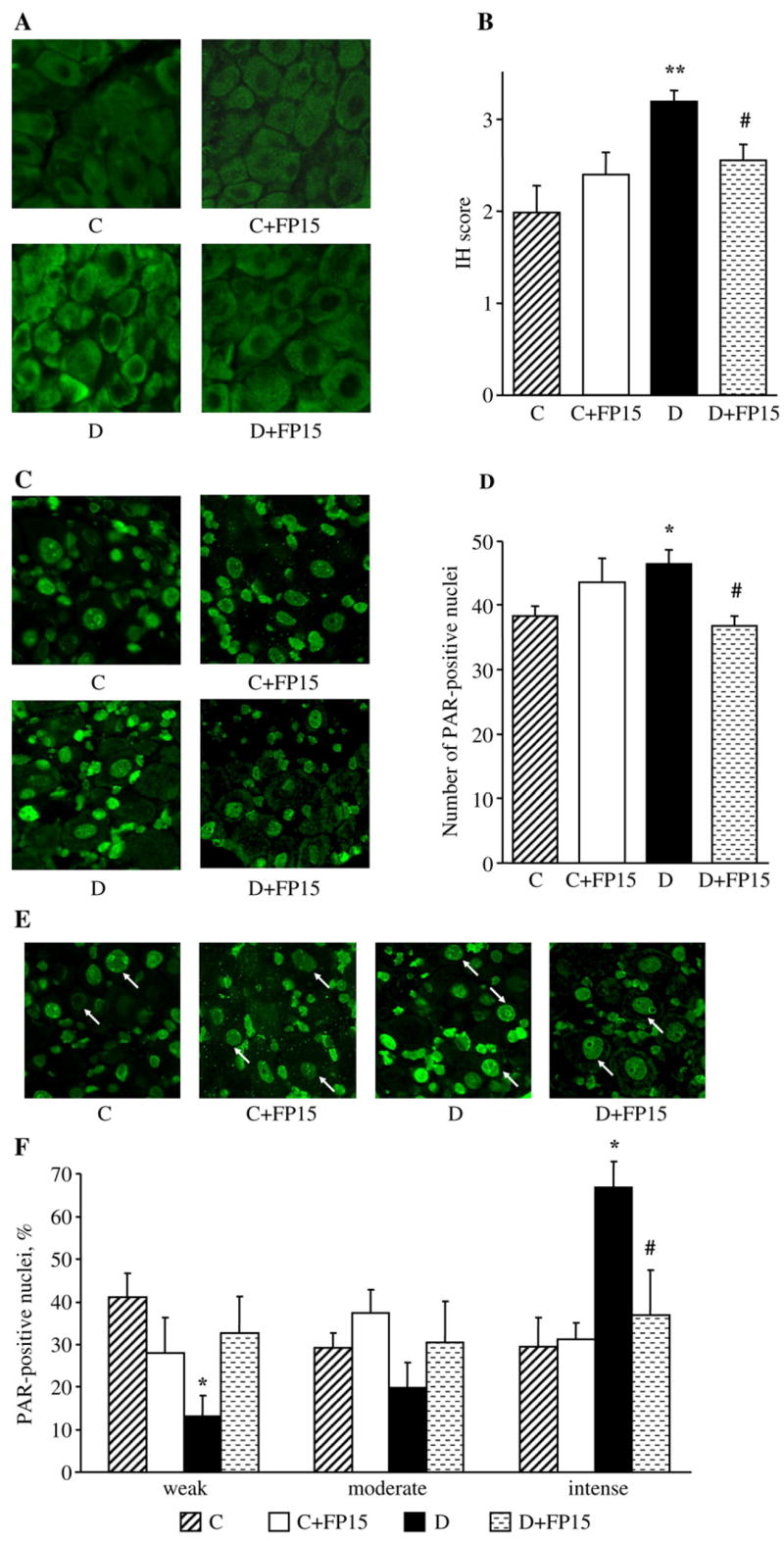Fig. 6.

Representative microphotographs of immunofluorescent staining of nitrotyrosine (A) and poly(ADP-ribose) (C) in the dorsal root ganglia, and poly(ADP-ribose) in dorsal root ganglion neurons (E) of control and diabetic mice with and without a peroxynitrite decomposition catalyst treatment. Arrows on Fig. 6, E indicate neurons with identifiable poly(ADP-ribose) fluorescence. Magnification ×40. Scores of nitrotyrosine immunofluorescence in dorsal root ganglion neurons (B), counts of dorsal root ganglion poly(ADP-ribose)-positive nuclei (D), and percentage of dorsal root ganglion neurons with weak, moderate, and intense poly(ADP-ribose) immunofluorescence (F), in experimental groups. The number of dorsal root ganglion neurons with weak, moderate and intense poly(ADP-ribose) immunofluorescence was expressed as a percentage of neurons with identifiable poly(ADP-ribose) immunofluorescence in the dorsal root ganglia of control and diabetic mice with and without a peroxynitrite decomposition catalyst treatment. Mean±SEM, n=9–11 per group. C — control mice; D — diabetic mice; a,bp<0.05 and <0.01 vs control mice; cp<0.05 vs untreated diabetic mice.
